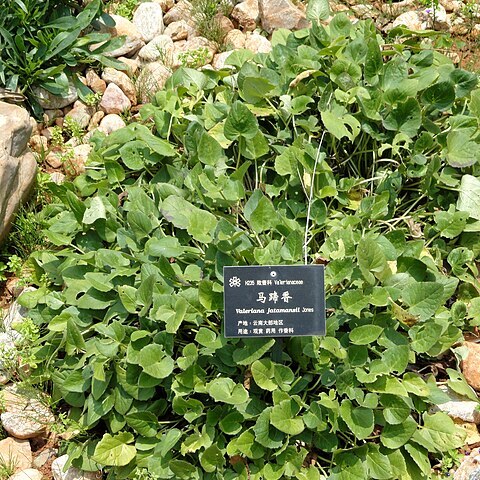| Therapeutic use
|
Anti-inflammatory agents (rhizome), Antineoplastic agents (rhizome), Asthma (rhizome), Cough (rhizome), Expectorants (rhizome), Hypnotics and sedatives (rhizome), Hysteria (rhizome), Menstruation-inducing agents (rhizome), Anti-inflammatory agents (root), Asthma (root), Chorea (root), Cough (root), Epilepsy (root), Expectorants (root), Flatulence (root), Hypnotics and sedatives (root), Hysteria (root), Menstruation-inducing agents (root), Nervous system diseases (root), Neurotic disorders (root), Parasympatholytics (root), General tonic for rejuvenation (root), Cholera (stem), Dyspepsia (stem), Hysteria (stem), Leprosy (stem), Pharyngitis (stem), Skin diseases (stem), Splenic diseases (stem), Toothache (stem), Analgesic (unspecified), Anodyne (unspecified), Carminative (unspecified), Dysuria (unspecified), Hypnotic (unspecified), Hypochondria (unspecified), Hysteria (unspecified), Incense (unspecified), Repellant(Insect) (unspecified), Nerves (unspecified), Nervine (unspecified), Sclerosis(Eyelid) (unspecified), Sedative (unspecified), Stimulant (unspecified), Sudorific (unspecified), Tonic (unspecified), Urogenital (unspecified), Antibiotic (unspecified), Parturition (unspecified), Spasm (unspecified), Tranquilizer (unspecified), Vermifuge (unspecified), Antispasmodic (unspecified), Chorea (unspecified), Epilepsy (unspecified), Neurosis (unspecified), Hair loss (unspecified), Amenorrhea (unspecified), Analgesics (unspecified), Anticonvulsants (unspecified), Antineoplastic agents (unspecified), Antipyretics (unspecified), Aphrodisiacs (unspecified), Appetite stimulants (unspecified), Arthralgia (unspecified), Ascites (unspecified), Asthenia (unspecified), Asthma (unspecified), Bronchitis (unspecified), Cardiotonic agents (unspecified), Colic (unspecified), Common cold (unspecified), Cough (unspecified), Diuretics (unspecified), Dysmenorrhea (unspecified), Dyspepsia (unspecified), Disorder of ejaculation (unspecified), Emollients (unspecified), Erysipelas (unspecified), Expectorants (unspecified), Eye diseases (unspecified), Fever (unspecified), Flatulence (unspecified), Gonorrhea (unspecified), Graves ophthalmopathy (unspecified), Headache (unspecified), Heart diseases (unspecified), Hypnotics and sedatives (unspecified), Infection (unspecified), Influenza, human (unspecified), Jaundice (unspecified), Kidney diseases (unspecified), Laxatives (unspecified), Leprosy (unspecified), Menstruation-inducing agents (unspecified), Neuralgia (unspecified), Neurotic disorders (unspecified), Pharyngitis (unspecified), General tonic for rejuvenation (unspecified), Skin diseases (unspecified), Sleep initiation and maintenance disorders (unspecified), Splenic diseases (unspecified), Ulcer (unspecified), Urination disorders (unspecified), Wound healing (unspecified), Wounds and injuries (unspecified)
|

